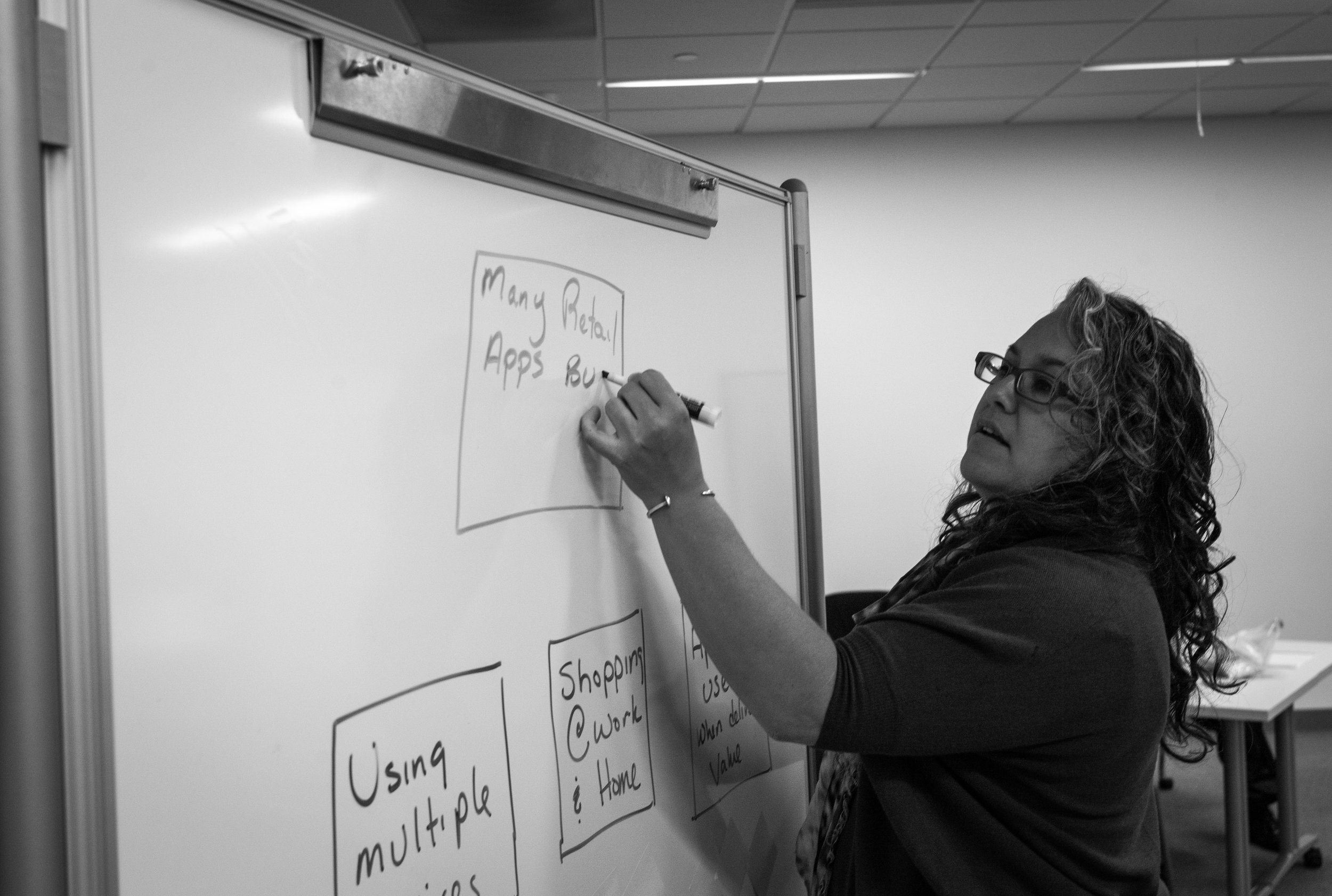The business community’s growing interest in design recently took frog to Harvard’s Innovation Lab for a crash course in the process and techniques of sensemaking, or how we turn qualitative research data into design.
frog Strategy Director Scott King, and Participatory Design Director Turi McKinley joined me to facilitate intense bootcamps for three classes in renowned Harvard Business School professor Srikant Datar’s Human Centered Design course. Professor Datar has been working with firms such as frog, IDEO, Luma Institute, SIT (Systematic Inventive Thinking), and Continuum to shape his curriculum and offer students access to contemporary design and innovation methods. This was our second year participating.
Professor Datar notes in the introduction to his syllabus:
“Innovation and Design Thinking allows students to develop basic skills in creative problem solving, innovation, and human‐centered ‘design thinking.’ Innovation has become increasingly important because of the rapid evolution in products and business models and the ever more complicated world in which businesses and organizations operate. The course focuses on the manager’s or leader’s role as an innovator and facilitator of innovation by others. The primary objective of the course is to help students develop creative thinking skills, which are key to innovation.”
The class gave students a taste of the sensemaking process by using first hand research — directly engaging in the act by drawing insights from existing data sets, such as typed interview transcripts from recent in-store retail ethnographies. Prior to class students gathered in teams of five to study the data to find similarities and differences. Then, they externalized and grouped their observations in order to draw out the insights. From there, each team used their insights to develop opportunity statements that may inform the design of a new way to shop and buy merchandise from a retail department store. Our frogThink Toolkit provided handy creative collaboration tools and templates, both in class and for teams to use, as they progress in their projects and studies.
Following the work session, the frog team presented a 20-minute case study featuring a project with similar objectives that applied the same sensemaking methodologies to inspire the design of new transaction experiences for customers.
Students were introduced to basic competencies and concepts such as:
- Applying methods of design synthesis including externalization, affinity grouping, insight generation, and concept development in the context of a design problem
- Understanding how research and synthesis inform and inspire the design process
- Drawing insights from data and methods of communicating design synthesis results to stakeholders
- Conceptualization techniques, intended to visualize opportunities and possible solutions to design problems
For theoretical good measure, each class read texts by some of the leading thinkers in the field of design research including former frog Jon Kolko’s Exposing the Magic of Design, Nigel Cross’ Designerly Ways of Knowing; Mary Jo Bitner, Amy L. Ostrom, and Felicia N. Morgan’s Service Blueprinting: A Practical Technique for Service Innovation; and, a recent contribution to frog’s Insights series by this author in collaboration with Scott King, and Vu Le, Uncommon Sense: The New Role of Sensing in Design Research. You can read up on these books and more in our review of other helpful literature in What You Will Find On A Design Researcher’s Bookshelf.
Enjoy a peek into the day’s events below.
(This essay first published on frog’s design mind.)






